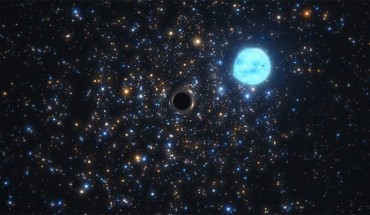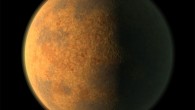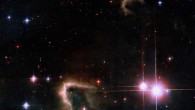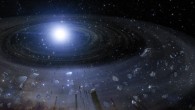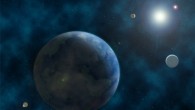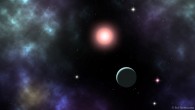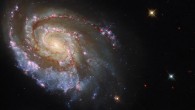Astronomers using the Multi Unit Spectroscopic Explorer (MUSE) instrument on ESO’s Very Large Telescope have discovered a low-mass black hole in the Large Magellanic Cloud, a satellite galaxy of the Milky Way, some 160,000 light-years away. This artist’s impression shows NGC 1850 BH1 and a massive star orbiting it. The distortion of the star’s shape is due to the strong gravitational force exerted by the black hole. Image credit: M. Kornmesser...

